What Does 1st, 2nd, and 3rd Mean on LinkedIn and How do I Get More Connections?
Understand now how degrees of connection work on LinkedIn, and use that knowledge to grow your network.

LinkedIn is regarded as the world's largest professional social networking platform. It is also known as one of the most influential social media networks, with about 756 million members—That is surely a lot of potential contacts!
As you know, your success on LinkedIn is directly proportional to the size of your network of professional connections on the platform. So, to get more connections, you would need to understand the three different connection levels. 1st, 2nd, and 3rd degrees are basically different levels of connection on LinkedIn.
Luckily, this blog is your ultimate guide to increasing your Linkedin connections and to do that, let's take a dive into what 1st, 2nd, and 3rd degrees mean on LinkedIn.
What Does 1st, 2nd, 3rd Mean on LinkedIn?
1st Degree Connections
Your 1st Degree connections refer to people that are directly in your network. This direct connection could either be a result of them accepting your invitation to connect with you or you accepting theirs. You will notice a '1st-degree' icon next to your 1st Degree connections, which indicates you are part of each other's network. As a result of this, LinkedIn lets you view the other's profile and send messages back and forth.
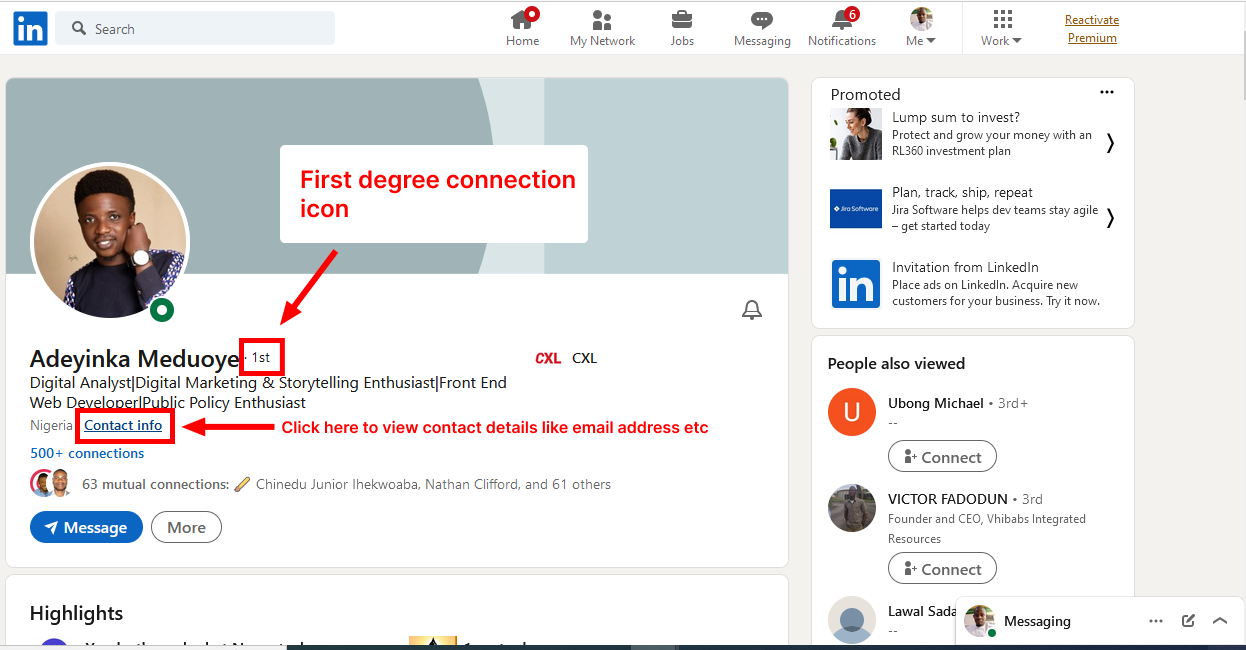
One important thing to note about the 1st-degree connection on LinkedIn is that you have access to their contact details like phone numbers and email addresses. So, to access the contact details of a prospect, you need to turn them into 1st-degree contact.
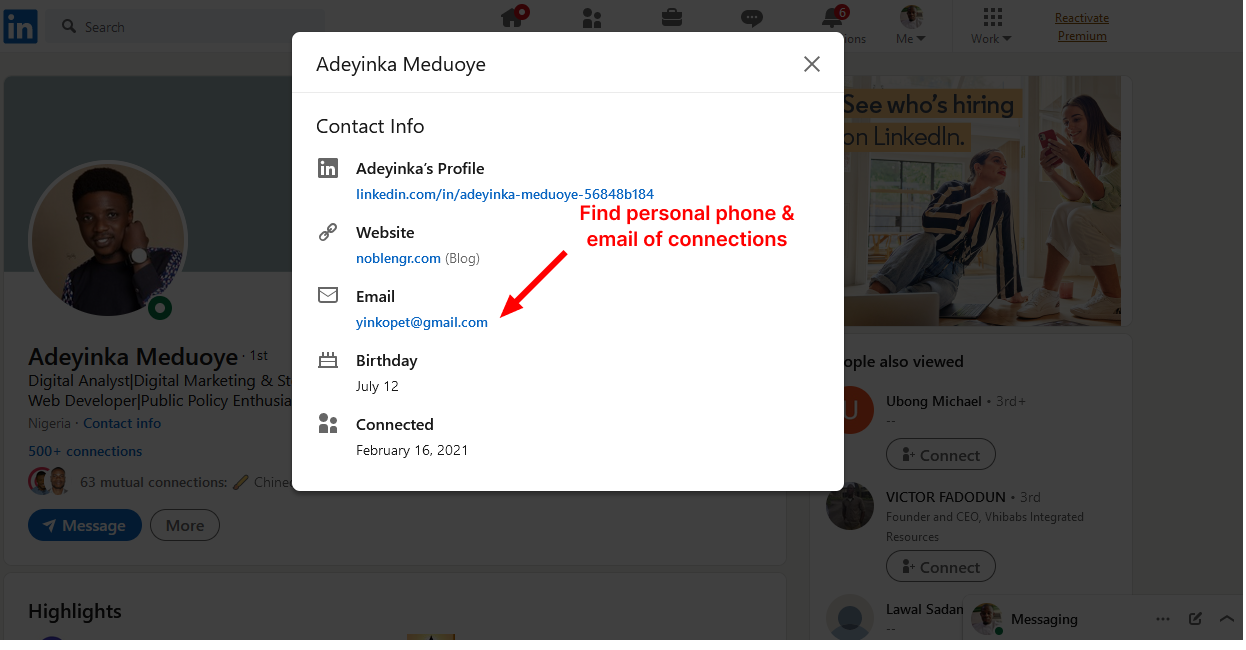

However, keep in mind that LinkedIn sets a limit on the number of first-degree connections to have (30,000 maximum) so that you can have a good user experience.
2nd Degree Connections
As you consistently use LinkedIn for getting more sales and networking, you may come across people who fall into the category of a '2nd-Degree' connection group. A person in this group does not belong to your network. They are either connected to your 1st-degree network, or they are "friends of friends." You will see a '2nd-degree' icon when you search their names or visit their profiles.

Although, with a LinkedIn premium account, you can directly send an InMail or introduction to your 2nd-degree connection. Otherwise, contacting your 2nd-degree links isn't possible. You may also choose to send them a connection request to become first-degree connections.
3rd Degree Connection
3rd-degree connections are simply people connected with your 2nd-degree connections. They are basically connections of your connections. You will see a 3rd-degree icon next to their profile name in search results and on their profile.
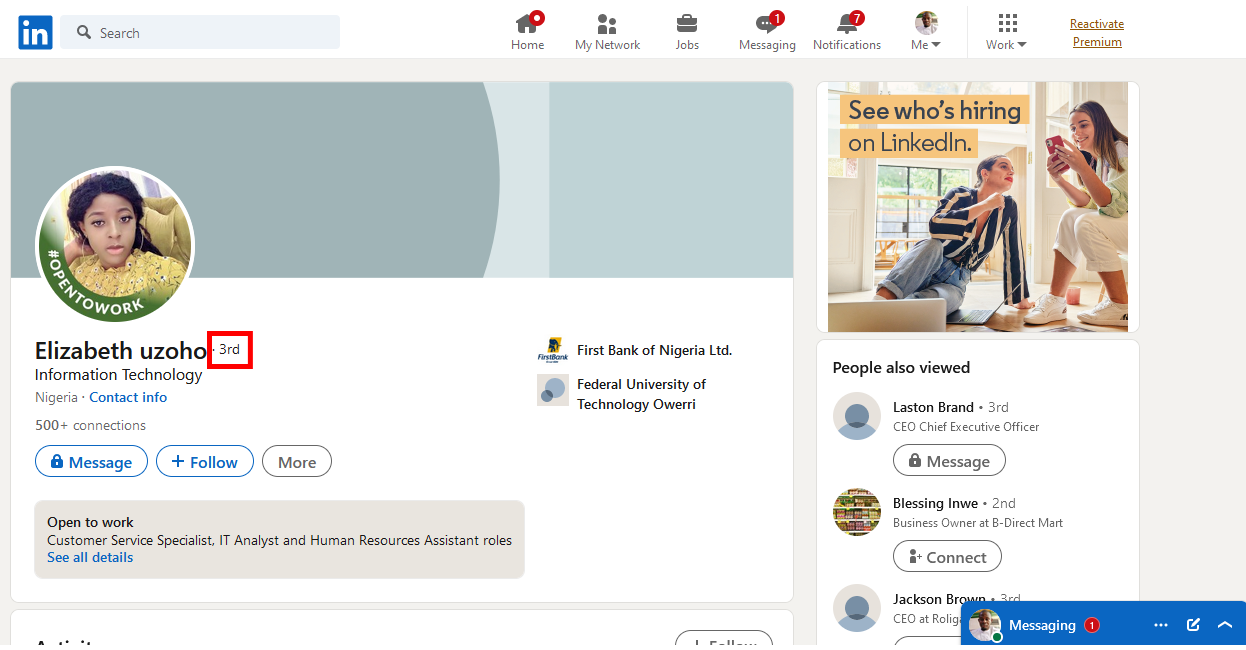
If their full names are displayed on their profile, then you can send them an invitation by clicking 'Connect.'
But, if only the first letter of their last name is shown, clicking 'Connect' isn't an option, but you can contact them through an InMail, or you can send them a connection request. When you view the profile of someone in the 3rd-degree category, you will notice a "3rd" icon.
How to Get More Connections on LinkedIn
On LinkedIn, just as it is with life, "your network is your net worth." Therefore, it is imperative that you would want to maximize any opportunity to grow your network. However, to connect with a 2nd-degree connection, you have to click on the 'Connect' icon below their profile. And to increase your chance of getting connected, you should personalize your message.
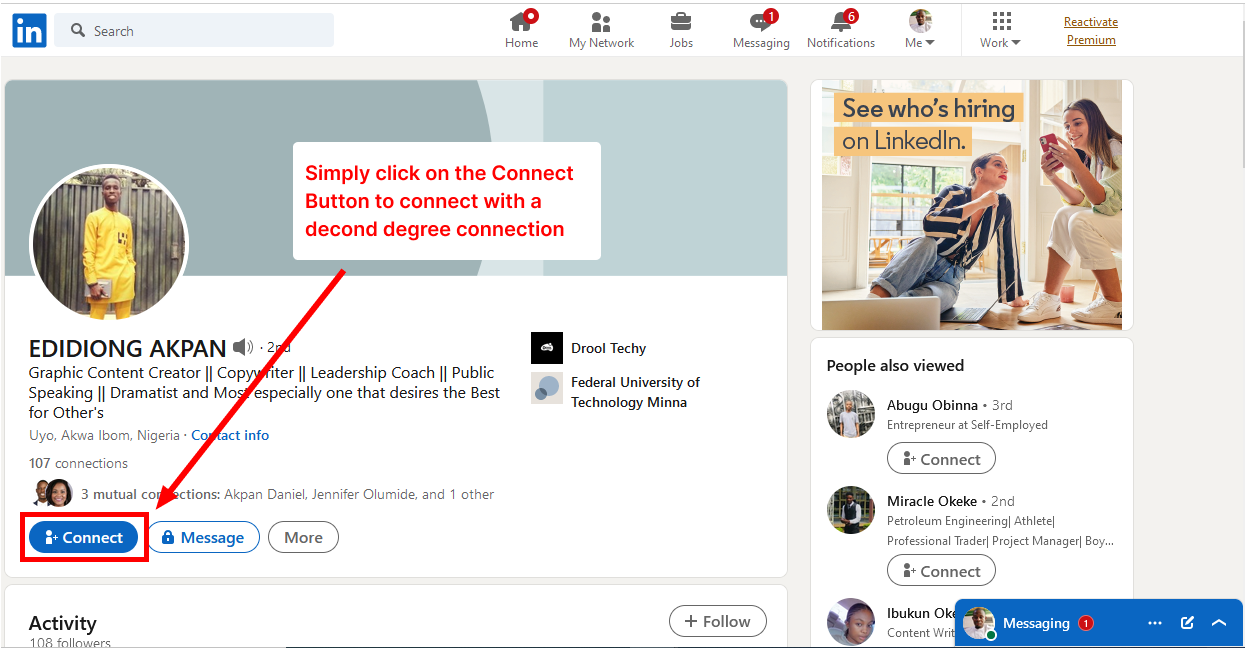
When sending a personalized message, make sure to follow the golden rule: treat others how you want to be treated. For example, I would most likely decline if someone sent me a message asking for a connection with no explanation. Again, don't just copy-paste the same message to everyone; it would make you look like a spammer.
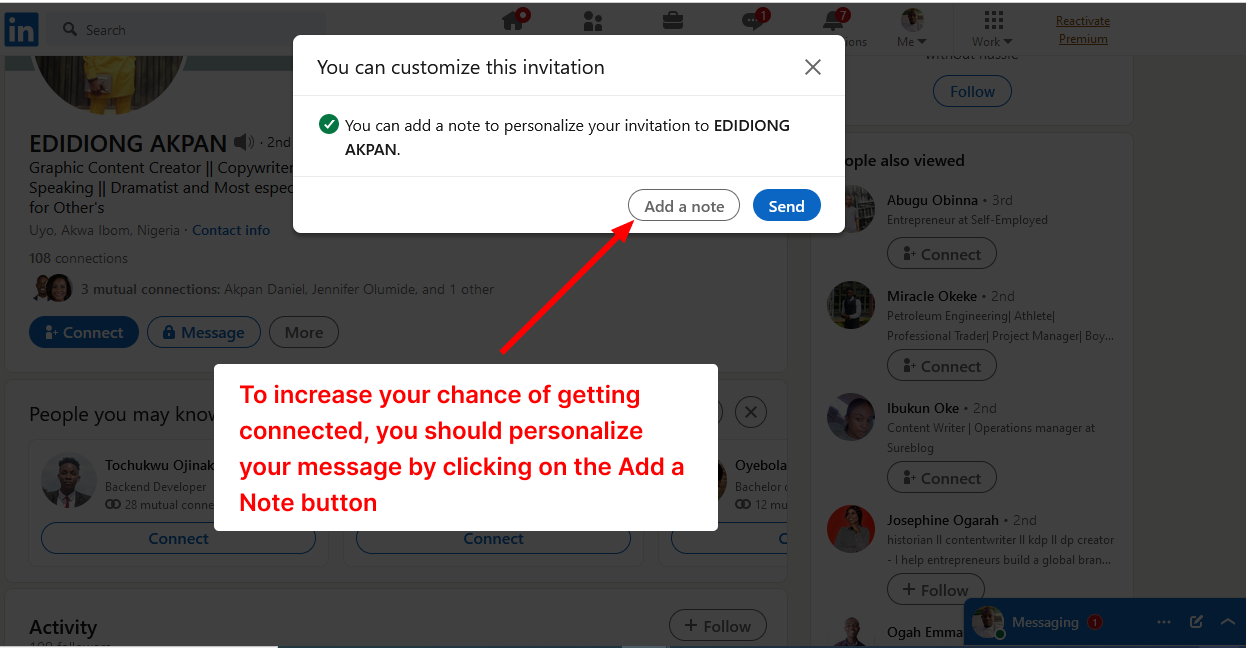
To connect with a 3rd-degree connection is entirely different. If you can see the person's full name (that is, their first name and last name), you can go ahead and send them a connection request. But if you are unable to see the person's last name, it means you can't connect with them. In such a case, you should use the InMail option to send a direct message.
Note: InMail is a Linkedin premium feature that allows you to directly send a message to another LinkedIn member to whom you are not connected.
Can I Possibly Cancel Connection Requests?
If you mistakenly sent a connection request to your 2nd or 3rd level connections and are wondering if you can withdraw or cancel, then the answer is yes. Here's how;
For Your Desktop:
- Go to the My Network section.
- Select 'See all' available next to 'Invitations.'
- Now tap on the Sent tab.
- You can see all the invitations sent.
- Select Withdraw to cancel your connection request.
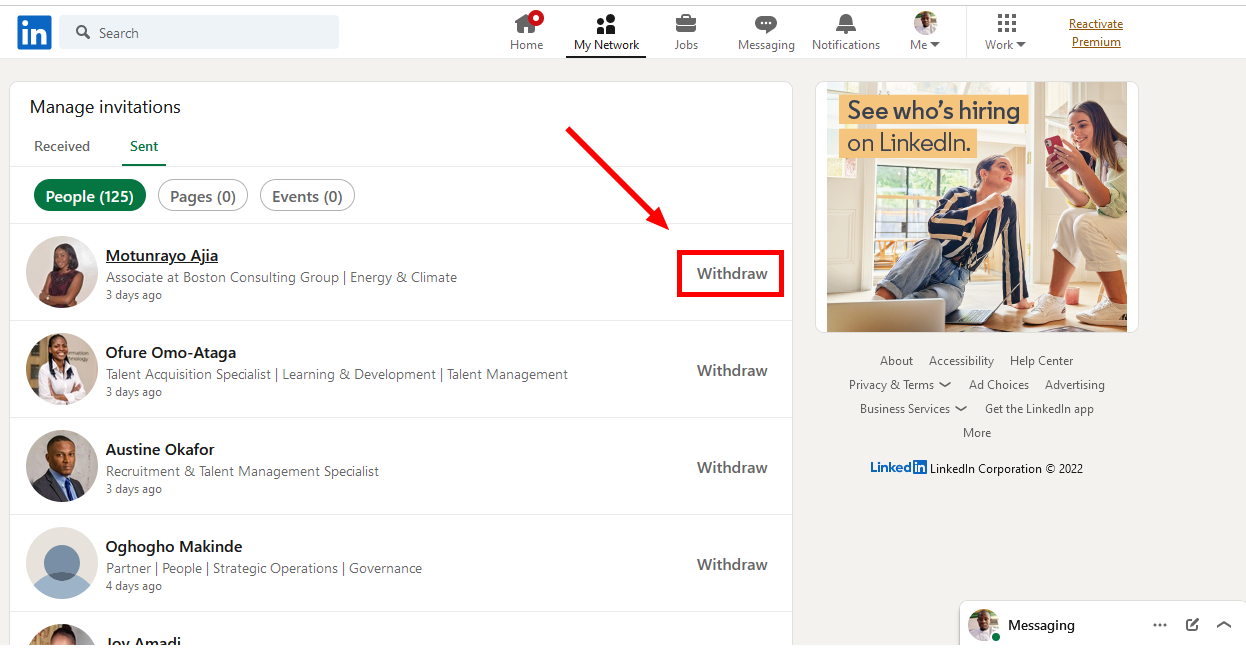
For Your Phone:
- Go to the My Network section.
- Select Invitation.
- Now tap on the Sent tab.
- Tap Withdraw beside the profile name if you want to cancel the request.

What Should I Do If a Connection Request is ignored?
There are so many reasons why a connection request may be ignored. Even if you had followed all the rules, there is a chance that 50% of your connections won't be accepted.
What should you do then?
Well, the easy thing to do is to give up and move on. But then, the goal is to grow your network, so that another option would be getting their emails. But the thing is, you don't have access to the emails of your 2nd and 3rd-degree connections on LinkedIn. However, if you are using LinkedIn for lead generation, you would definitely need Linkedin Sales Navigator to find potential leads.
Conclusion
LinkedIn is a powerful networking tool that is really great for lead generation. However, to make the most out of it, you have to have a good idea of what you are doing, and that involves understanding the different degrees of connection–1st, 2nd, and 3rd.
